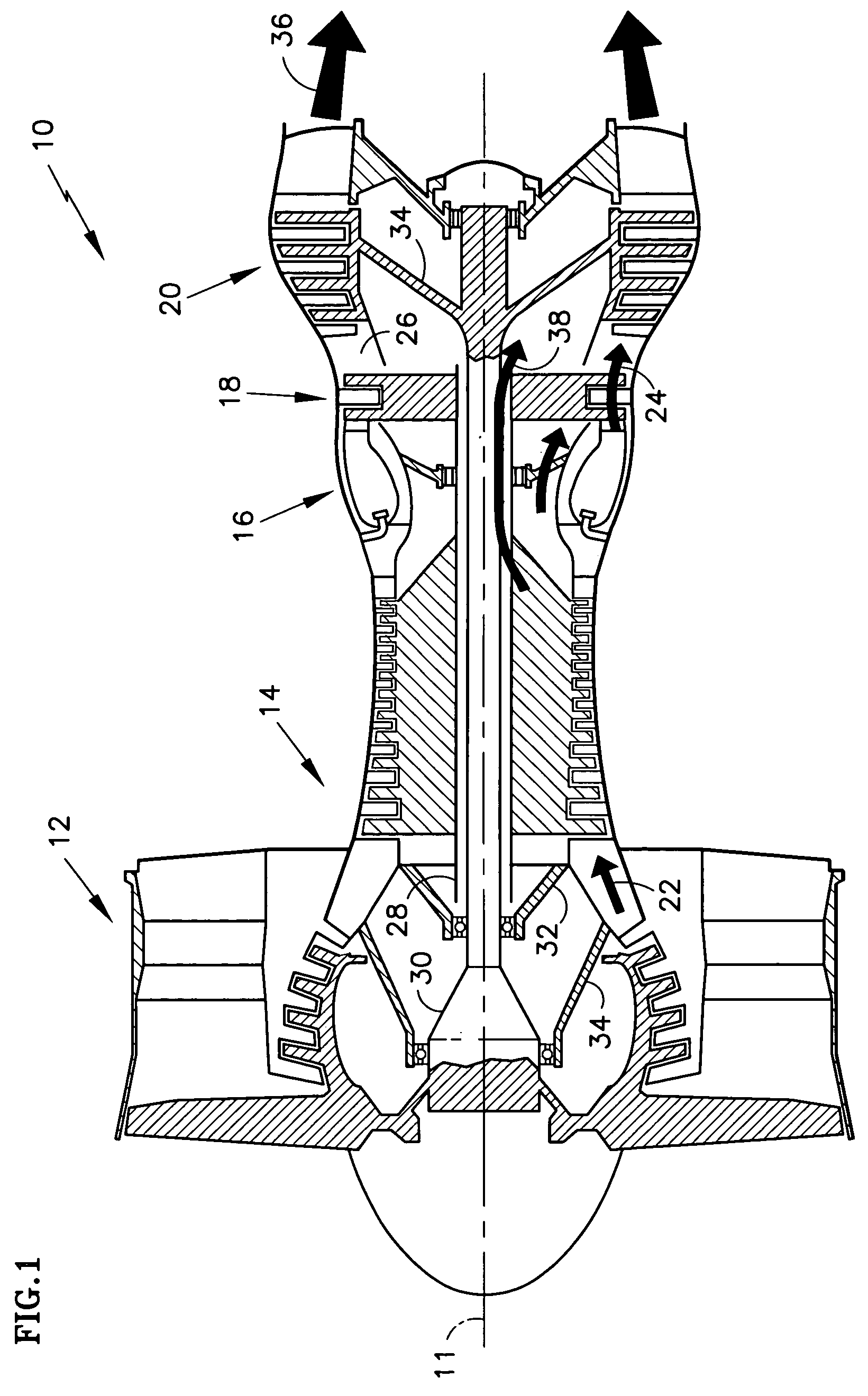Integrated bladed fluid seal
a fluid seal and integrated technology, applied in the direction of liquid fuel engines, machines/engines, efficient propulsion technologies, etc., can solve the problems of increasing manufacturing costs and complexity of turbines, difficult sealing of the interface between rotating blade stages and stationary vane stages, and sealing design challenges, so as to reduce leakage of cooling air and improve the apportionment of cooling air.
- Summary
- Abstract
- Description
- Claims
- Application Information
AI Technical Summary
Benefits of technology
Problems solved by technology
Method used
Image
Examples
Embodiment Construction
[0027]The major sections of a typical gas turbine engine 10 of FIG. 1 include in series, from front to rear and disposed about a central longitudinal axis 11, a low-pressure compressor 12, a high-pressure compressor 14, a combustor 16, a high-pressure turbine 18 and a low-pressure turbine 20. A working fluid 22 is directed rearward through the compressors 12, 14 and into the combustor 16, where fuel is injected and the mixture is burned. Hot combustion gases 24 exit the combustor 16 and expand within an annular duct 26, driving the turbines 18, 20. The turbines 18, 20, in turn drive coupled compressors 14, 12 via concentric shafts 28, 30, forming a high rotor spool 32 and a low rotor spool 34 respectively. Although a dual spool engine 10 is depicted in the figure, three spool engines 10 are not uncommon. The combustion gases exit the engine 10 as a propulsive thrust 36, used to power an aircraft or a free turbine. A portion of the working fluid 22 is bled from the compressors 12, 14...
PUM
 Login to View More
Login to View More Abstract
Description
Claims
Application Information
 Login to View More
Login to View More - R&D
- Intellectual Property
- Life Sciences
- Materials
- Tech Scout
- Unparalleled Data Quality
- Higher Quality Content
- 60% Fewer Hallucinations
Browse by: Latest US Patents, China's latest patents, Technical Efficacy Thesaurus, Application Domain, Technology Topic, Popular Technical Reports.
© 2025 PatSnap. All rights reserved.Legal|Privacy policy|Modern Slavery Act Transparency Statement|Sitemap|About US| Contact US: help@patsnap.com



